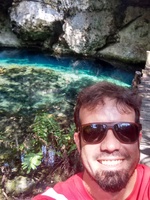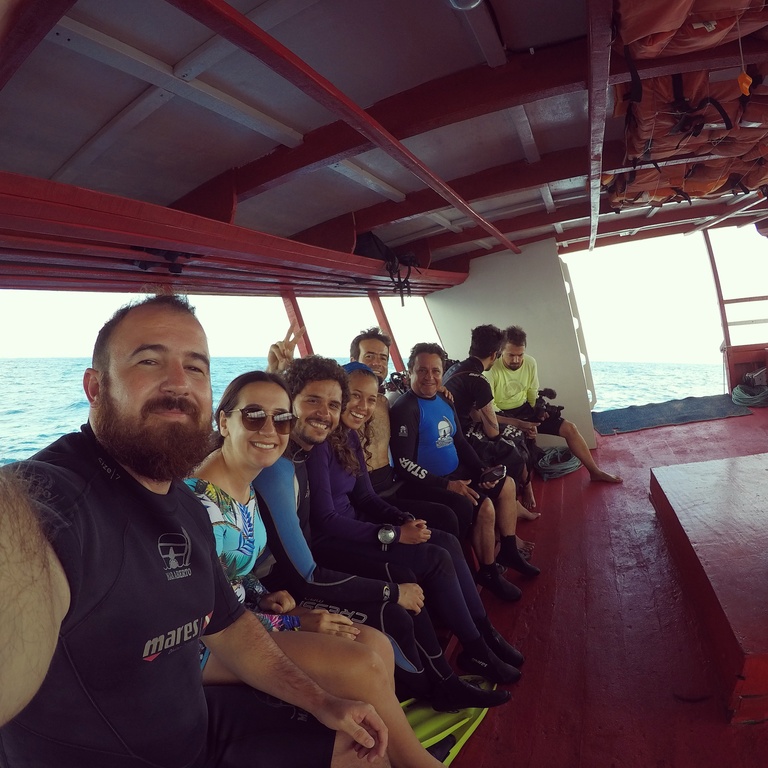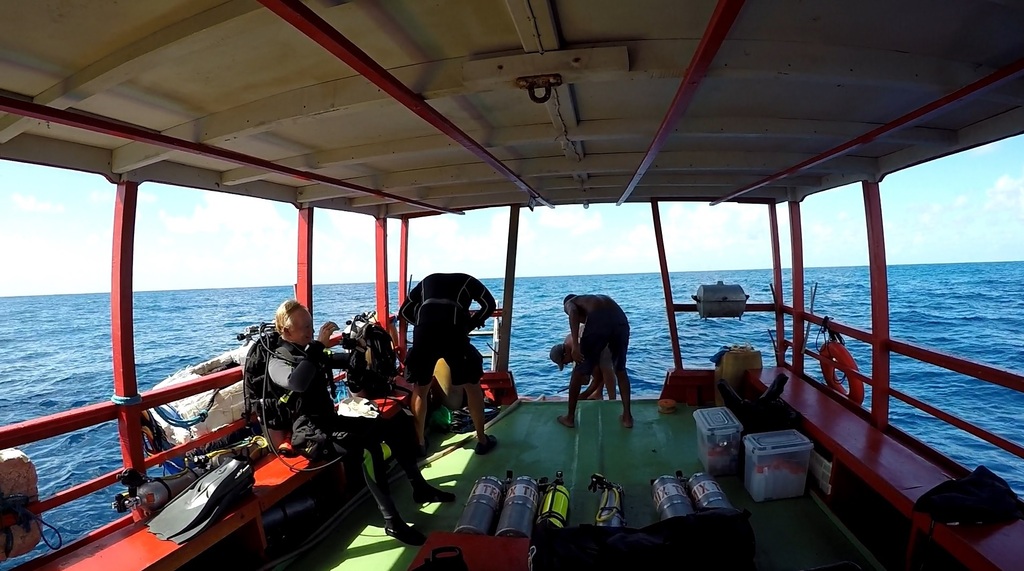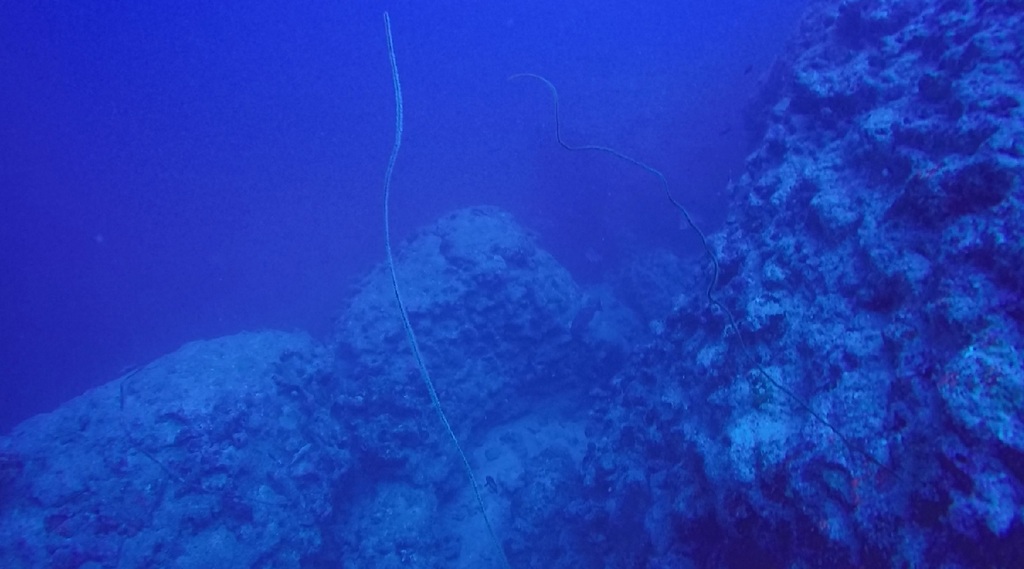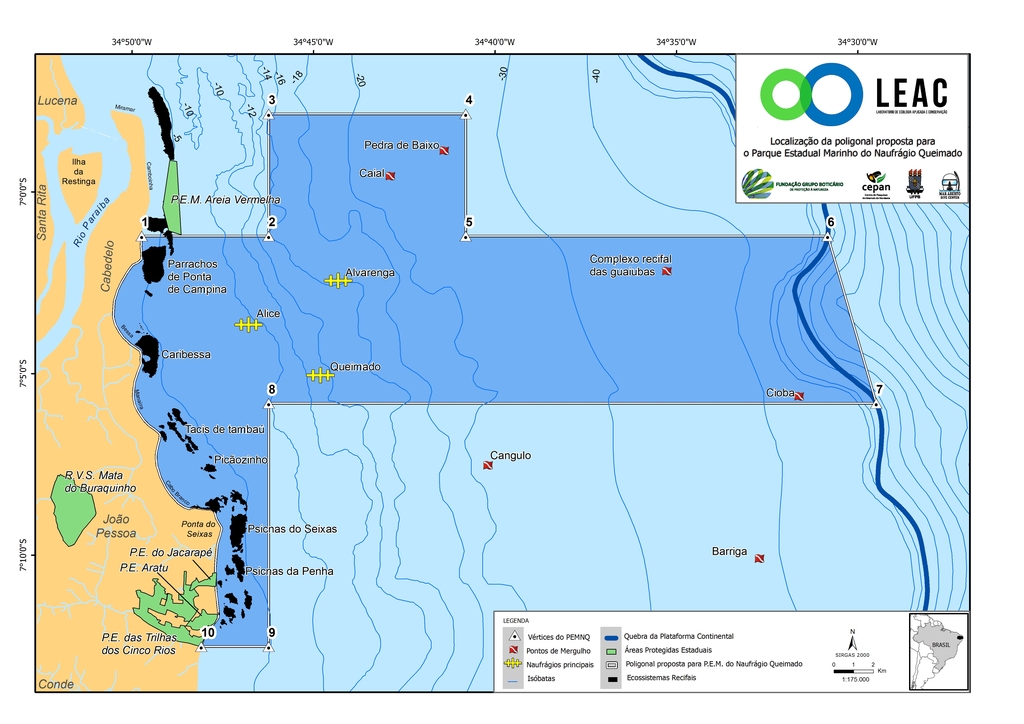Behind the science:
Limited potential of deep reefs to serve as refuges for tropical So...
2018, September 5
Posted by Veronica Radice
“Mesophotic reefs show limited potential to serve as refuges in tropical Southwestern Atlantic”
What was the most challenging aspect of your study (can be anything from field, lab to analysis)?
The most challenging aspect of this study was mapping the mesophotic reefs and getting to them for recording the videos. The deeper reefs were about 20-km offshore and navigation was often hard. In some cases, we had to spend the night in the ocean on the deck of the small fishing boat adapted for our research. In addition, below the 40 m depth, tech dive operations became quite expensive, giving no place for mistakes.
What was the most memorable moment in undertaking this study?
Certainly, the diving on the little known deep reefs was the most memorable moment. There is no feeling better than going down 30 meters in that blue immensity and come across sharks, sea turtles, lots of fishes, barracudas, huge sponges, lobsters and unknown corals. I have spent most of my academic life studying neotropical forests and getting to these places was like visiting pristine forests in Central Amazonia. Watching the recordings again is very nostalgic.
What was your favorite research site in this study and why?
That is a hard question because I was very motivated to visit all sites, but of course I liked more those where marine life were more abundant and diverse. There is a shallow reef very close to the coast of the city of João Pessoa – a sort of ‘urban reef’, which retains large coral colonies of Montastraea cavernosa, Siderastrea stellata and Mussismilia hispida. Diving on there was very surprising given the high level of degradation due to pollution, tourism, and overfishing. Amongst the deeper reefs, the submerged pinnacles of the region known as Raso da Pedra Nova and the shelf valley of the Guaiuba complex were my favorite sites. They are amazing in geological and biological terms.
Other than your co-authors, with whom would you like to share credit for this work?
The technical divers Orione Álvares da Silva, Michel Russi, and Ismar Just supported the fieldwork. I thank the Fundação Grupo O Boticário de Proteção à Natureza (grant number 1044-20152) for funding the study and the Mar Aberto Dive Center for logistical support. The Conselho Nacional de Desenvolvimento Científico e Tecnológico (CNPq) provided research grant to me and the Coordenação de Aperfeiçoamento de Pessoal de Nível Superior (CAPES) provided graduate scholarship to Juliano Morais. Juliano was present in many dives of the fieldwork and did a great job in data analyses and manuscript writing.
Any important lessons learned (through mistakes, experience or methodological advances)?
We started the project using a remotely operated vehicle (ROV) to access the deeper areas. Ignoring our limited budget, we developed a very light acrylic structure, screwed it to the bottom of the ROV, and attached four GoPro cameras to get full view of the environment. We also participated in certified training from VideoRay, bought a 40-m extension of the ROV tether and made small modifications in the boat to operate the system. The first test in the pool was successful, but at sea, absolute failure. Even without the acrylic structure, the limited power of the ROV engines could not beat the tides. We returned to our original idea of using divers (ourselves) to get the videos, but reduced the maximum depth of the project from 90 to 70 m to save on technical dive operations. The good news was that the acrylic structure with the cameras, but without the ROV, was reused in a project headed by Mariana Silva and is about to be patented. I do not recommend the use of this little ROV in marine research like ours.
Can we expect any follow-up on this work?
That is the best part of the history, to my point of view. This study is helping the state government of Paraíba to create a 422-km^2 marine protected area. This will increase the level of state marine protection from 0.5% to 10%, and help to reach the UN target 14.5 of conserving 10% of coastal and marine ecosystems by 2020. Have a look at this 13-minutes video available here, which summarizes the scientific information that is grounding the creation of the protected area. We are working along with politicians, artisanal fishermen, tourism agencies and other local actors to get this area decreed by the end of 2018.
Featured article:
|
|
Limited potential of deep reefs to serve as refuges for tropical Southwestern Atlantic corals | article Morais J, Santos BA (2018) Ecosphere 9:e02281 |

|
